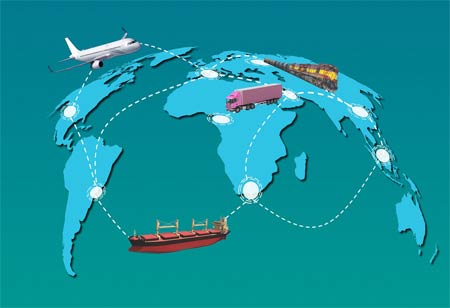THANK YOU FOR SUBSCRIBING
THANK YOU FOR SUBSCRIBING

By
Logistics Transportation Review | Tuesday, July 30, 2024
Stay ahead of the industry with exclusive feature stories on the top companies, expert insights and the latest news delivered straight to your inbox. Subscribe today.
The mode of transportation provides shippers exclusive use of the truck, allowing for greater control over the shipment.
FREMONT, CA: Choosing the correct shipping method is crucial for efficiency, cost-effectiveness, and timely delivery. Less-than-truckload (LTL) and Full-Truckload (FTL) are primary freight logistics modes catering to different shipping needs and volumes. Both have distinct advantages and play pivotal roles in the logistics ecosystem. LTL shipping is used when a shipment does not require a full truckload, typically 150 to 15,000 pounds. Multiple shippers share the same truck, and each consignment occupies only a portion of the truck's space. This method is cost-effective for smaller shipments as costs are shared among multiple shippers.
FTL shipping is employed when a shipment occupies the entire truck, regardless of weight. It is ideal for large shipments or when the shipper requires the car to be dedicated solely to their goods. FTL provides direct transport from the point of origin to the destination without intermediate stops. When multiple shipments are consolidated, the overall transportation cost is distributed among several shippers. LTL offers greater flexibility in terms of shipment sizes and frequencies. Businesses can ship smaller quantities more frequently, aligning logistics operations with inventory and demand cycles.
LTL carriers typically have extensive networks and can offer more frequent pickups and deliveries. It ensures that shippers can access reliable and timely transportation services, even for smaller shipments. It makes LTL more environmentally friendly than multiple smaller shipments transported separately. FTL shipping offers direct transportation from origin to destination without intermediate stops or transfers. It results in faster transit times than LTL, making FTL the preferred choice for time-sensitive shipments. With FTL, the shipment is loaded and unloaded only once, reducing the risk of damage associated with multiple handling points in LTL shipping.
FTL is more cost-effective than LTL for shipments filling an entire truck. The per-unit cost of transportation decreases as the shipment size increases, making FTL the economical choice for large-volume shipments. Businesses can optimize their logistics using LTL and FTL based on their needs. During peak seasons, companies might use FTL to ensure timely delivery of high-demand products while using LTL for regular, smaller shipments during off-peak times. FTL might be more efficient for long-distance shipments, whereas LTL can be advantageous for regional or short-distance deliveries.
FTL can benefit high-value or delicate goods with its security and reduced handling, while durable goods with flexible delivery schedules might be well-suited for LTL. LTL and FTL are indispensable components of freight logistics, each offering unique benefits that cater to different shipping requirements. FTL is essential for fragile or high-value goods. It ensures that the goods are handled according to specific requirements and reduces the risk of theft or loss. Businesses can enhance their logistics operations, achieve cost savings, and improve delivery performance.
I agree We use cookies on this website to enhance your user experience. By clicking any link on this page you are giving your consent for us to set cookies. More info





